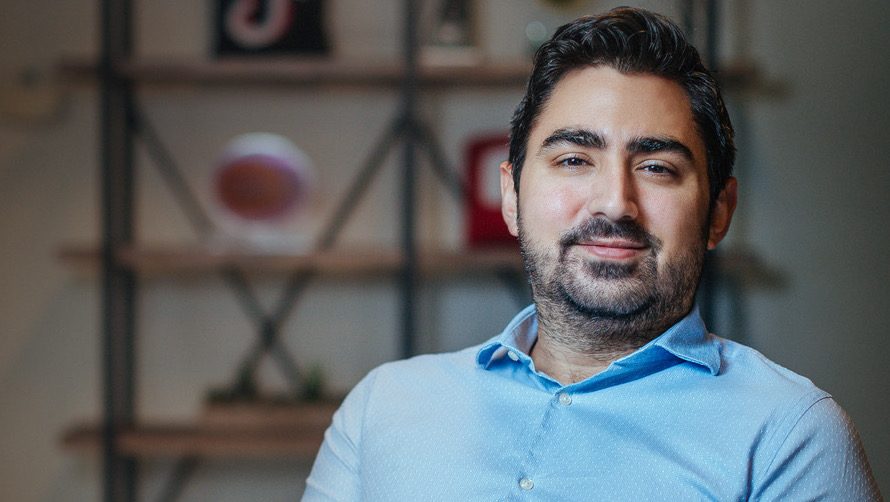
News
‘Deal with the Devil’: Harvard Medical School Faculty Grapple with Increased Industry Research Funding

News
As Dean Long’s Departure Looms, Harvard President Garber To Appoint Interim HGSE Dean

News
Harvard Students Rally in Solidarity with Pro-Palestine MIT Encampment Amid National Campus Turmoil

News
Attorneys Present Closing Arguments in Wrongful Death Trial Against CAMHS Employee

News
Harvard President Garber Declines To Rule Out Police Response To Campus Protests
Social Media and Mental Health: Warnings are not Enough

Recent leaked documents reviewed by the Wall Street Journal show that Facebook is aware of the negative impacts Instagram has on teenagers, including increased rates of anxiety and depression.
“Algorithms are designed to keep us engaged. They are not designed to maximize our mental health, wellbeing, or general happiness,” said Open Influence CEO and Co-Founder and Forbes 30 Under 30 Eric Dahan.
Dahan’s company, Open Influence, has partnered with over 1,000 of the world’s biggest companies, such as Disney, Netflix, Universal, and McDonald’s, to design Gen-Z marketing campaigns.
“When we go online, we’re comparing our normal self to the best image everyone else is projecting, and we’re putting that in a bucket,” said Dahan, explaining the negative impacts of social media. “We’re comparing our average selves to everyone’s best self collectively.”
Dahan explained how this issue translates into the context of the body. Younger generations regularly view images of bodies that are posted with the intent of presenting a face of perfection. These images utilize filters and editing to create an unattainable standard that people then compare themselves to.
And yet, there remain undeniably positive elements of social media.
“On one hand, we’ve democratized information. Anyone can just go and create content, right? You don’t have to hope to sign with a big publisher or the right television network or get picked up by a radio series, whatever it is, right? You don’t have to really worry about that. You can just go online and start creating,” said Dahan.
Though this is empowering, Dahan said it also can lead to misinformation and the portrayal of unrealistic expectations.
Additionally, the issue of accountability continues to be as relevant as it is complex.
“I believe that the social platforms are ultimately responsible [for harm caused by social media] since the algorithms and platform design determine how users behave on the platform,” Dahan said. “Therefore small feature and algorithm changes could easily and quickly drive positive change.”
While Instagram was under fire for the negative impacts their platform had on user mental health, TikTok released a series of new resources to support their community’s well-being.
“We’re proud that our platform has become a place where people can share their personal experiences with mental well-being, find community and support each other, and we take very seriously our responsibility to keep TikTok a safe space for these important conversations,” said TikTok Director of Policy Tara Wadhwa in their Sept. 14 announcement.
Measures outlined in the announcement are meant to create this safe space, including expanded search interventions in relation to suicide, stronger sensitive content warning labels, and expanded information and guides on eating disorders.
However, in Dahan’s eyes, solutions could go farther.
“Warnings help, but they cannot have us unsee content or prevent the psychological effects to our subconscious. What would be more effective would be changing the algorithms to optimize for mental health. Arguably though, that could mean users are less engaged which ultimately would hurt the platforms.”
Another consideration is the role of content producers, including brands and influencers.
Dahan said that, though the category of influencers is very broad, the specific subcategory of fashion, beauty, and lifestyle influencers has definitely contributed to social media’s negative impact on mental health.
Dahan said his company always places a diverse set of influencers in front of a brand. And yet, on the brand side, “The people making those [contracting] decisions will bring those biases in, of who they thought was the face of the brand, or would be a good sort of representation,” he said.
He went on to explain that in the past year, brands strived to strengthen their diversity, inclusion, and representation initiatives.
“Those decision makers on the brand side were not only more conscious about this, but they were looking to say, we need to drive more diversity and inclusion,” he said.
“We’ve seen a huge price spike in minority influencers, just because so many brands have been seeking them out, and so much so that pricing for African American, or Latino, or Asian influencers have outpriced Caucasian influencers.”
However, the current negative impacts of social media persist. Updated initiatives on some platforms to mitigate these impacts and increasingly diverse representation within the influencer community is a start. To truly mitigate these harms, far more action is needed.
Want to keep up with breaking news? Subscribe to our email newsletter.
